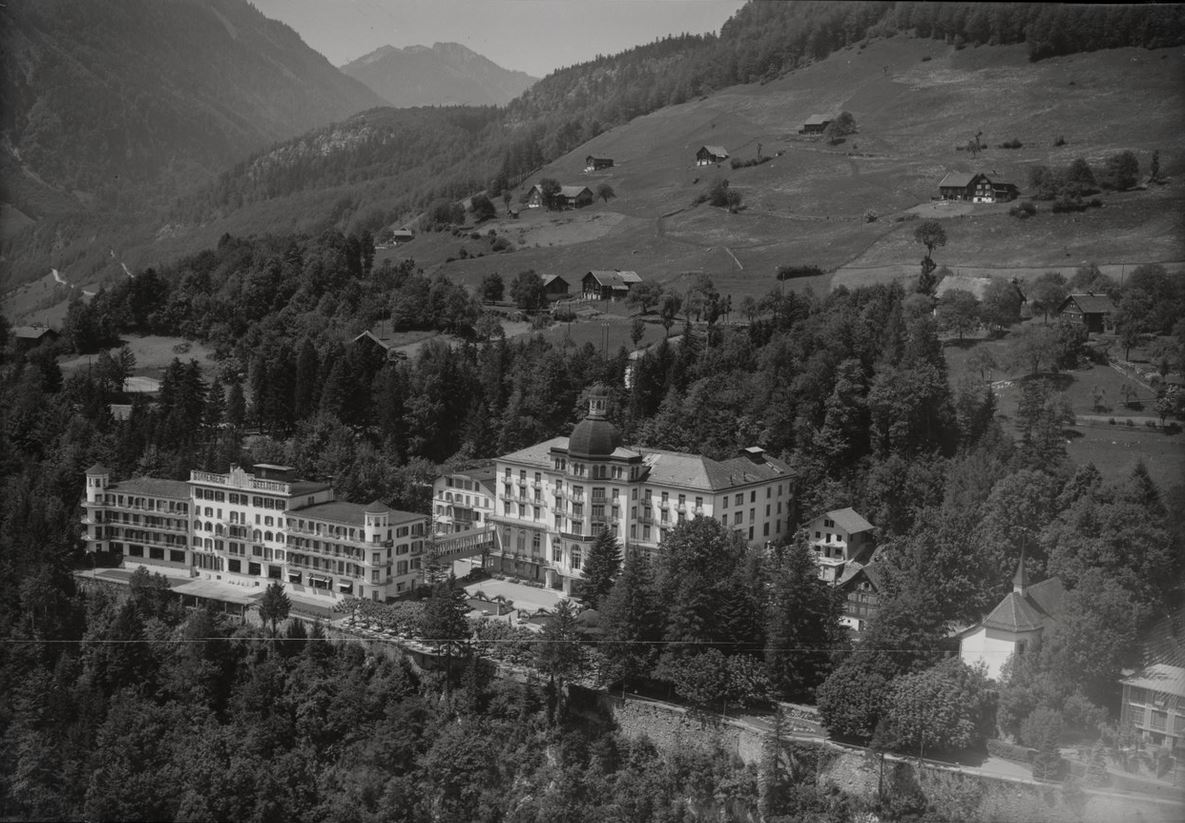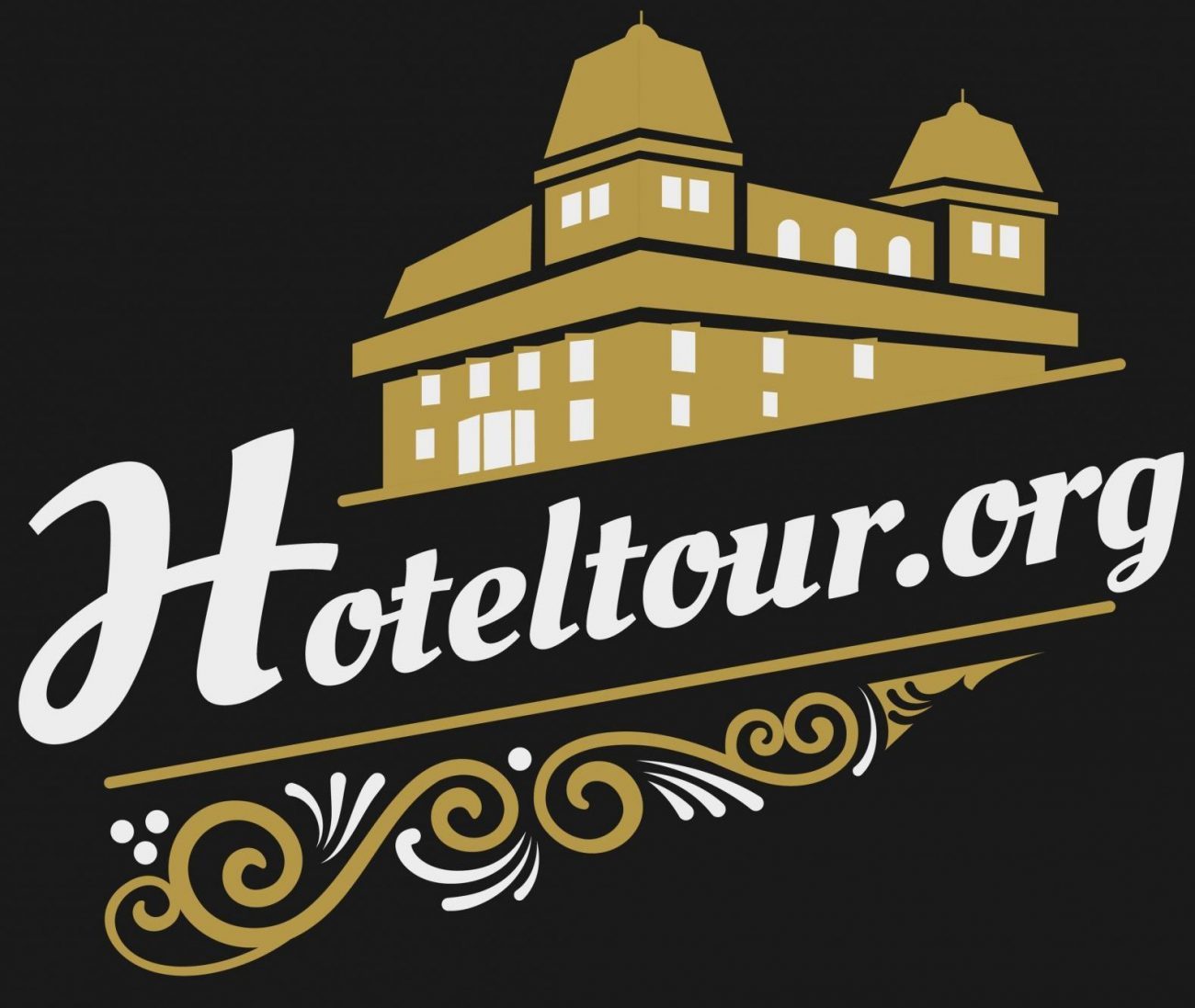
A building of the Schöneck health resort near Beckenried (built in 1870, demolished in 1983).
The Borsinger family had a decisive influence on the development of Baden’s baths in the 19th century. They ran the Blume, Limmathof and Verenahof spa hotels. The Borsingers were also very well connected throughout Switzerland and, for example, played a decisive role in the establishment of the Schöneck health resort near Beckenried. They were also related by marriage to hoteliers in Orselina, Bürgenstock and Seelisberg. Later they also ran the Hotel Kastanienbaum near Lucerne and the Krone in Lenzburg.
More information
It has long been thought that the bust of the sublimely gazing goddess with a diadem was Juno. However, the erotic motif of the bare shoulder and the luxuriant curls falling into the breast have led recent researchers to identify the portrait as Venus. Based on comparative finds from Italy and Spain, it can be shown that the bust of Venus in its original function adorned the bridle of a life-size horse statue. The equestrian statue probably stood in a public square and represented an important governor or the Emperor. The nature of this propaganda and the style of the bust indicate that it was made in Italy in the first half of the 1st century. It is unclear how and when the bust of Venus reached the Lararium in Baden. Perhaps the last owner, who was very fond of art, was able to buy the piece cheaply from a dealer in old goods?
In the 270/280s, a fire (or several fires) destroyed a large part of the settlement of Aquae Helvetica (the Roman Baden). Most of the buildings were not rebuilt, and so Venus probably lay dormant underground for the following 1600 years or so. It was not until 1871, during excavations to build a new barn for the Hotel Blume, that it was rediscovered – and soon exhibited. Franz Xaver Borsinger displayed it together with other objects in a showcase in the Antiquities Cabinet in the Ladies’ Salon of the Hotel Blume. In 1907, Mathilde Borsinger-Müller lent the statuette to the National Museum in Zurich. All the Roman finds from the Blume were up for sale at the time, but the price initially seemed too high for the Baden Historical Museum. It was not until 1925 that the items could be acquired by the Baden Historical Museum at a more favourable price. Since then, the Venus statuette has been on display.
Venus, born from the foam of the sea, is the goddess of love, sensual desire, and beauty. According to the legend, Venus is also the mother of the mythical founding father Aeneas. As the progenitor (Venus Gentrix) of the Roman people, she is therefore particularly worshipped.
Juno is the wife of Jupiter and the highest Roman goddess. She is the goddess of women and protector of the family and marriage.
In the autumn of 1871, the hotelier of the Blume, Franz Xaver Borsinger, built a barn in the Haselfeld, that also housed a washhouse. During excavations, foundation walls of several Roman houses and various objects were discovered. The well-known archaeologist Ferdinand Keller described the finds in the Anzeiger für schweizerische Alterthumskunde of 1872:
«Barely a foot below the surface, the walls of two adjoining buildings came to light, whose construction alone attested to the wealth of the builder. The material of these, consisting of cut fieldstones, Jura lime and bricks, joined with brick mortar and regularly layered, was covered on the outside with plaster in which lines imitating ashlar construction were torn. The original floor was at a depth of 11 feet, and here, in the narrow space between two houses, the bronze figures, badly damaged by fire and subsequent oxidation, were found (…)».
Keller suspects that the site of the findings was a wealthy country house. A total of three layers indicating a fire were uncovered on the site. No restoration of the buildings took place after the third fire.
«The upper fire layers contain, unfortunately mostly in fragments, a lot of equipment relating either to the structural furnishings of the house or to the equipment of the various chambers, e.g. Roof tiles, heating tubes, pieces of painted walls, hand millstones, amphorae, sherds of cooking utensils and aretine earth (…), clay lamps, (…) then various things made of bronze, finally, a quantity of iron implements, namely chains, fittings on doors and wagons, keys, farming and gardening tools.»
Honoured friends of antiquity – historical awareness in the Baden spa resort
«As the title page of this directory shows, the items just described are on display in a small private collection and the owner, F. X. Borsinger, Hotel Blume, Baden, is always happy to show them to honoured friends of antiquity.»
The spa town of Baden boomed during the Gründerzeit and the Belle Epoque, so that at that time more guests found their way to the Limmat river almost every year. But a spa treatment was more than just time spent in the water. Sociability was just as important. People were interested in art, attended concerts at the Casino (Kurhaus) or went on cultural excursions in the region. And there was no shortage of history either: In the course of the 19th century, Roman finds kept coming to light during construction work in Baden. The Roman past of the town gradually became a trademark and selling point. In the Casino, a small collection was already housed on the western long side of the concert hall from 1876.
At that time, the bourgeoisie was the driving force of Swiss society, culture and politics. It consisted of industrialists, merchants, directors of large companies, doctors, lawyers and other members of the liberal professions, senior civil servants, professors at universities and secondary schools, pastors and wealthy pensioners. The distinction from the working class was reflected in types of leisure activities. People devoted themselves to Literature, the Fine Arts, Music and History had an important status, also in the spa resort. Here the difference between others classes, who also took a cure in Baden, manifested itself primarily in the choice of hotel, but also in the social programme of the stay.
In his work on the founding of the National Museum, historian Tommy Sturzenegger explains the motivation for collecting objects at the time:
«The collecting of antiquities reflected the aesthetic consciousness of the middle classes and already represented a counter-movement to industrially produced mass goods. Because the goods of daily use no longer represented any artistic value due to machine production methods, the old things found in attics, monasteries and castles experienced a real renaissance.»
In addition, there was also the not entirely unfounded fear of losing these objects, which were now considered valuable, by selling them abroad (cf. Rubbish Theory by Michael Thompson). For example, the Roman finds in the Blume were also for sale for a long time. These sales often triggered the foundations of the first museums, including the Baden Historical Museum.
From the middle of the 19th century onwards, there was increased collecting and research in Baden. The idea of an antiquarian museum arose in 1875, also due to many new findings during the construction of the Casino. Bartholomäus Fricker, the president of the museum commission from 1875 to 1913, was in charge, but he and the city of Baden had to wait about 40 years until the History Museum in the Landvogteischloss could open its doors in July 1913.
Zubler, Kurt: Ausstellungstext zum Thema Götterhimmel, Historisches Museum Baden.
Borsinger, Franz Xaver: Verzeichniss ausgegrabener Antiquitäten, Hotel Blume, Baden, Schweiz, 1877 (Digitalisat ZB Zürich: pdf)
Tanner, Albert: Arbeitsame Patrioten – wohlanständige Damen, Bürgertum und Bürgerlichkeit in der Schweiz 1830 – 1914, Zürich 1995, S. 1.
Historisches Lexikon der Schweiz; Artikel Bürgertum https://hls-dhs-dss.ch/de/articles/009586/2006-05-19/ (HLS)
Sturzenegger, Tommy: Der grosse Streit, Wie das Landesmuseum nach Zürich kam, Zürich, 1999, S. 26-29
Zubler, Kurt: Ausgegraben : Sammler, Sammlung und Sammlungsgeschichten : zum 125-Jahr-Jubiläum der Gründung des Historischen Museums Baden, Badener Neujahrsblätter, 2000. (pdf)
More illustrations






